Explain the paraxial rays?
Important Questions on Ray Optics and Optical Instruments

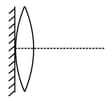
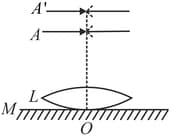
A light ray enters a solid glass sphere of refractive index at an angle of incidence . The ray is both reflected and refracted at the farther surface of the sphere. The angle (in degrees) between the reflected and refracted rays at this surface is:
A parallel beam of light strikes a piece of transparent glass having cross section as shown in the figure below. Correct shape of the emergent wavefront will be (figures are schematic and not drawn to scale)
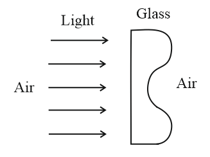
A transparent thin film of uniform thickness and refractive index is coated on the convex spherical surface of radius R at one end of a long solid glass cylinder of refractive index , as shown in the figure. Rays of light parallel to the axis of the cylinder traversing through the film from air to glass get focused at distance f1 from the film, while rays of light traversing from glass to air get focused at distance f2 from the film. Then
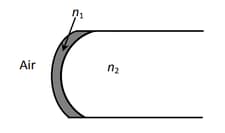
A beaker of radius is filled with water up to a height as shown in the figure on the left. The beaker is kept on a horizontal table rotating with angular speed . This makes the water surface curved so that the difference in the height of water level at the centre and at the circumference of the beaker is , as shown in the figure on the right. Take this surface to be approximately spherical with a radius of curvature Which of the following is/are correct? ( is the acceleration due to gravity)
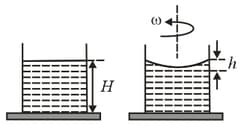
A converging mirror is placed on the right hand side of a converging lens as shown in the figure. The focal length of the mirror and the lens are and respectively. The separation between the lens and the mirror is and their principal axes coincide. A point source is placed on the principal axis at a distance to the left of the lens. If the final beam comes out parallel to the principal axis, then the value of is:
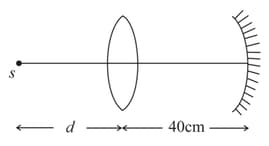

If the whole set up is immersed in water without disturbing the object and the screen positions, what will one observe on the screen?

